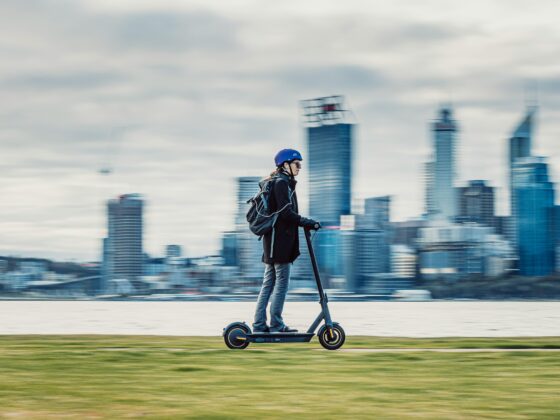
Productivity isn’t just a metric; it’s essential for success. Hotels face constant pressure to boost efficiency, cut operational costs, and exceed guest expectations. As the market becomes more crowded and guests become more selective, optimizing resources while providing exceptional service is more crucial than ever.
One effective way to measure and improve efficiency is by analyzing productivity as revenue per worked hour. This approach shows how well a hotel uses labor to generate revenue. However, it’s not enough to measure productivity and push for better performance; keeping it within an optimal range is crucial. This balance ensures that productivity is neither too low—indicating inefficiency and wasted resources—nor too high, which can lead to overworked staff and a decline in service quality. Hotels can stay competitive, innovate, and provide outstanding guest experiences by focusing on continuous improvement within this optimal range.
Understanding Productivity
Productivity is a fundamental concept that measures how efficiently an organization transforms its inputs into outputs. Simply, it assesses the effectiveness with which resources are utilized to produce goods or services. Inputs typically include resources like labor, capital, materials, and energy, while outputs are the final products or services delivered to customers.
In the hotel industry, inputs encompass all the resources invested in operations, such as staff hours, financial capital, equipment, and facilities. Outputs are the services provided to guests, including lodging, dining, event hosting, and other amenities. A higher productivity ratio indicates that more output is generated per input unit, signifying greater efficiency and effectiveness in operations.

Importance of Productivity
Understanding and measuring productivity is vital for several reasons:
- Operational Efficiency
- Streamlining Processes: Productivity metrics help identify how well resources are being used, highlighting areas where processes can be improved or streamlined.
- Resource Optimization: By analyzing productivity, hotels can ensure they make the best use of their staff, facilities, and equipment, reducing waste and inefficiencies.
- Service Delivery: Efficient operations lead to faster and more reliable service delivery, enhancing the guest experience.
- Cost Management
- Reducing Operational Costs: Higher productivity often translates to lower costs per output unit. Hotels can reduce labor, energy, and materials expenses by getting more out of each resource.
- Budget Allocation: Understanding productivity allows for better financial planning and allocation of funds to areas that yield the highest returns.
- Profit Maximization: Effective cost management through improved productivity directly contributes to higher profit margins.
- Competitiveness
- Market Positioning: Hotels that operate more efficiently can offer competitive pricing or invest more in guest amenities, giving them an edge in the market.
- Adaptability: Efficient operations facilitate adaptation to market changes, such as fluctuations in demand or emerging industry trends.
- Reputation Enhancement: Consistently high productivity can improve service quality, enhance the hotel’s reputation, and attract more guests.
By thoroughly understanding productivity, hotel managers can make informed decisions that enhance operational efficiency, manage costs effectively, and improve industry competitiveness. This foundational knowledge sets the stage for implementing strategies that balance maintaining optimal productivity intervals with the pursuit of continuous improvement.
The Concept of Optimal Productivity Intervals
Why Productivity Should Be Within an Optimal Interval
Achieving optimal productivity is not about maximizing output at all costs; instead, it’s about finding the right balance where resources are used efficiently without overextending staff or compromising service quality. Productivity should be maintained within an optimal interval—neither too low nor too high—for several reasons:
- Balance Between Efficiency and Quality
- Avoiding Inefficiency: If productivity is too low, it indicates inefficiencies in operations, leading to wasted resources and higher costs.
- Preventing Overextension: If productivity is too high, employees may be overworked, leading to burnout and mistakes.
- Sustaining Service Quality: Maintaining a balance ensures that the quality of services provided to guests remains high, as staff have the appropriate workload to perform their duties effectively.
- Ensuring Employee Well-being
- Healthy Work Environment: An optimal productivity level promotes a healthy work-life balance for employees, reducing stress and turnover rates.
- Employee Satisfaction: Satisfied employees are more engaged and provide better service, directly impacting guest satisfaction.
Risks of Productivity Being Too Low
When productivity falls below the optimal interval, several negative consequences can arise:
- Inefficient Resource Utilization
- Underperformance and Idle Time: Low productivity may indicate that employees are not fully utilized, leading to idle time, during which labor costs are incurred without corresponding output.
- Ineffective Processes: It could reflect outdated or inefficient processes that slow operations and waste resources.
- Higher Operational Costs
- Increased Labor Costs: More staff hours are required to accomplish tasks, leading to higher payroll expenses without increased revenue.
- Reduced Profit Margins: Operational inefficiencies eat into profits, affecting the hotel’s financial health and ability to invest in improvements.
- Competitive Disadvantage
- Slower Service Delivery: Inefficiencies can lead to delays in service, negatively impacting the guest experience.
- Weaker Market Positioning: Competitors with higher productivity can offer better prices or services, attracting more guests and capturing market share.
Risks of Productivity Being Too High
Conversely, when productivity exceeds the optimal interval, it may signal overextension and potential issues:
- Overworking Staff
- Burnout Risk and High Turnover Rates: Excessive workloads can lead to physical and mental exhaustion, increasing absenteeism and employee turnover.
- Reduced Morale: Overworked employees may disengage, decreasing service quality and team cohesion.
- Decline in Service Quality
- Errors and Mistakes: Fatigued staff are more prone to errors, such as incorrect bookings or billing mistakes.
- Reduced Guest Satisfaction: Rushed or inattentive service can lead to negative guest experiences, harming the hotel’s reputation.
- Sustainability Issues
- Short-term Gains Not Maintainable Long-term: While high productivity might boost short-term results, it is often unsustainable and can damage the business and its workforce long-term.
- Health and Safety Concerns: Overworked employees are at higher risk of accidents and health issues, which can potentially lead to legal liabilities.
Finding the Optimal Productivity Interval
Finding and maintaining the optimal productivity interval involves a careful balance of several factors:
- Balance is Key
- Align Efficiency with Quality: Productivity targets should ensure that efficiency gains do not come at the expense of service quality.
- Employee Well-being: Consider the workload and capacity of staff to prevent burnout and maintain a positive work environment.
- Considerations for Setting the Optimal Interval
- Industry Benchmarks
- Competitive Analysis: Compare productivity metrics with industry standards and competitors to gauge where your hotel stands.
- Best Practices: Adopt proven strategies from industry leaders to enhance productivity.
- Historical Performance
- Trend Analysis: Review past productivity data to identify patterns, peak performance periods, and improvement areas.
- Goal Setting: Use historical data to set realistic and achievable productivity targets.
- Staff Feedback
- Engage Employees: Involve staff in discussions about productivity goals to gain insights into operational challenges and opportunities.
- Adjust Accordingly: Be open to adjusting targets based on feedback to ensure they are attainable and do not negatively impact morale.
- Industry Benchmarks
Focusing on maintaining productivity within an optimal interval can help hotels ensure efficient operations while safeguarding service quality and employee satisfaction. This balance is crucial for sustainable success in the competitive hospitality industry. In the next section, we’ll explore how embracing continuous improvement can prevent complacency and drive ongoing enhancements in productivity.
Balancing Optimal Productivity with Continuous Improvement
The Risk of Complacency
While maintaining productivity within an optimal interval is crucial, there’s a significant risk that settling into this comfort zone can lead to complacency. This complacency may hinder innovation and prevent hotels from adapting to new technologies and methods that could further enhance efficiency and service quality.
- Potential for Stagnation
- Settling Within an Interval May Hinder Innovation: When productivity levels are deemed acceptable, there may be less incentive to seek new improvement methods. This complacency can result in stagnation, where outdated processes remain unchallenged and opportunities for advancement are overlooked.
- Missed Opportunities
- Overlooking Advancements: Failing to stay abreast of industry developments means missing out on innovations that competitors might adopt. For example, introducing robot vacuum cleaners or advanced business intelligence tools in housekeeping represents technological advancements that can significantly improve efficiency. Ignoring such opportunities can leave a hotel trailing behind more progressive competitors.
Embracing Continuous Improvement
Hotels should embrace a culture of continuous improvement to prevent complacency and promote ongoing development. This involves regularly reassessing productivity goals, encouraging innovation at all levels, and integrating new technologies into daily operations.
- View Intervals as Flexible Benchmarks
- Treat Productivity Goals as Evolving Targets: Rather than seeing optimal productivity intervals as fixed endpoints, consider them dynamic benchmarks that evolve with the business. This perspective encourages regular evaluation and adjustment of productivity goals in response to internal performance and external market changes.
- Foster a Culture of Innovation
- Encourage Staff to Propose New Ideas and Improvements: Employees are on the front lines of daily operations and often have valuable insights into potential improvements. By fostering an environment where staff feel comfortable sharing ideas, hotels can tap into a wealth of knowledge and creativity. Regular brainstorming sessions, suggestion programs, and innovation workshops can facilitate this exchange of ideas.
- Integrate Technological Advancements
- Regularly Assess and Adopt New Technologies: Keeping pace with technological innovations is essential for maintaining competitiveness. Hotels should stay informed about emerging technologies in the hospitality industry and assess their potential benefits. Implementing tools like property management systems, mobile check-ins, automated housekeeping equipment, and business intelligence platforms can streamline operations and enhance the guest experience.
Case Studies: Implementing Innovations to Enhance Productivity
To illustrate the importance of continuous improvement and embracing new technologies, consider the following case studies:
Implementing Robot Vacuum Cleaners in Housekeeping
Productivity Enhancement
- Automation of Routine Tasks and Time Efficiency: Robot vacuum cleaners can handle the repetitive task of floor cleaning, allowing housekeeping staff to focus on more detailed cleaning duties that require a human touch. This automation increases overall efficiency by reducing the time spent on routine tasks and improving turnaround times for room readiness.
Employee Benefits
- Reduced Physical Strain and Opportunity for Skill Development: By delegating physically demanding tasks to robots, employees experience less physical strain, which can reduce fatigue and the risk of injury. Additionally, with routine tasks automated, staff can be trained in other areas, such as guest services or advanced cleaning techniques, providing opportunities for professional growth and job enrichment.
Guest Experience Improvement
- Consistent Cleanliness and a Modern Hotel Image: Robot vacuum cleaners provide consistent cleaning results, enhancing the overall cleanliness of the hotel. This consistency can increase guest satisfaction, as rooms and common areas reliably meet cleanliness expectations. Moreover, cutting-edge technology projects a modern and innovative image, appealing to guests who value forward-thinking establishments.
Implementing a Business Intelligence Tool
Productivity Enhancement
- Automated Data Collection and Reporting: A business intelligence (BI) tool automates data gathering from various sources, consolidating it into comprehensive dashboards and reports. This automation saves enormous amounts of manual work hours previously spent on data entry and report generation.
- Real-Time Insights: With up-to-date information, management can monitor key performance indicators (KPIs) and make timely decisions that positively impact operations.
Employee Benefits
- Focus on High-Level Skills and Knowledge: By reducing time spent on manual data processing, employees can concentrate on strategic tasks that utilize their expertise, such as analyzing trends and identifying growth opportunities.
- Professional Growth and Job Enrichment: Engaging in higher-level functions leads to skill development and job satisfaction as employees take on more challenging and rewarding responsibilities.
Profit Improvements
- Data-Driven Decision-Making: Access to accurate and timely data enables management to act swiftly on opportunities, optimize operations, and address issues before they impact performance.
- Maximizing Marginal Profits: The hotel can improve its flow-through by closely monitoring revenue streams and expenses through the BI tool, ensuring that increases in revenue lead to proportional increases in profit.
By viewing productivity intervals as flexible benchmarks and embracing continuous improvement, hotels can avoid the trap of complacency. Encouraging innovation and integrating new technologies like robot vacuum cleaners and business intelligence tools enhance productivity, improve employee satisfaction, and elevate the guest experience. This proactive approach positions hotels to adapt to changing market conditions and maintain a competitive edge in the industry.
Conclusion
Recap
In the ever-evolving hotel industry, measuring productivity is not merely about tracking numbers—it’s about understanding how efficiently your hotel converts resources into exceptional guest experiences. Focusing on productivity as revenue per worked hour gives you a clear picture of operational efficiency. Maintaining productivity within an optimal interval ensures that you strike the right balance between efficiency and the well-being of your staff without compromising on service quality. However, resting on these intervals can lead to complacency.
Embracing continuous improvement through innovation and technological advancements, such as robot vacuum cleaners and business intelligence tools, propels your hotel beyond current benchmarks, enhancing profitability and guest satisfaction.
Final Thoughts
Balancing efficiency with quality and employee well-being is the cornerstone of sustained success in the hospitality industry. It’s not just about doing things faster or cheaper; it’s about doing them better. By fostering a culture that values continuous improvement and innovation, hotels can adapt to changing market demands, exceed guest expectations, and create a supportive environment for employees. This holistic approach ensures long-term profitability and positions your hotel as a leader in a competitive market.
Call to Action
For Hotel Managers:
- Review Productivity Metrics
- Regularly assess your productivity goals to align with current operational realities and market conditions.
- Adjust targets as necessary to reflect advancements in technology and changes in guest expectations.
- Promote Innovation
- Encourage staff at all levels to contribute ideas for improvement.
- Create channels for open communication and recognize innovative contributions.
- Invest in Technology and Training
- Allocate resources to acquire tools that enhance productivity, such as automation equipment and business intelligence software.
- Provide training programs to empower your team to effectively utilize new technologies.
- Monitor Industry Trends
- Stay informed about the latest developments in the hospitality sector.
- Attend industry conferences, participate in professional networks, and subscribe to relevant publications.
By taking these proactive steps, you position your hotel to keep pace with the industry and set new standards for excellence and innovation. Embracing continuous improvement while maintaining optimal productivity ensures your hotel remains competitive, profitable, and a preferred choice for guests and employees.






